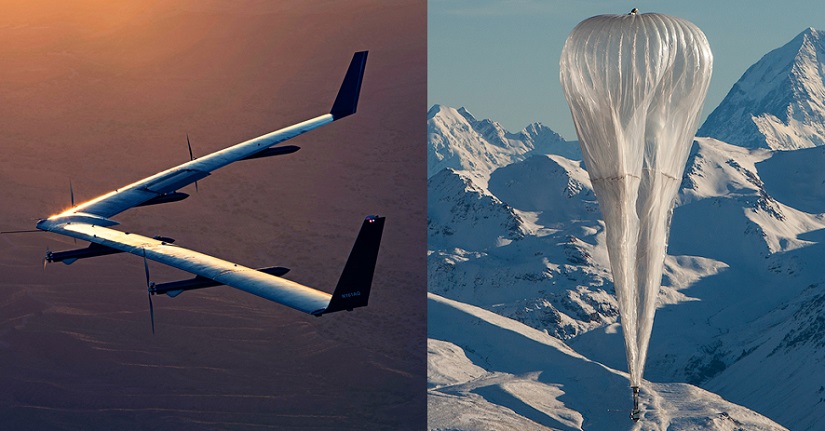- Facebook and Google are developing airborne internet transmitters.
- Facebook's take the form of lightweight planes,
- and Google's are giant balloons.

Facebook and Google are both working on airborne methods of broadband transmission.
Both companies aim to supply a broadband connection to areas not served by infrastructure like fibres or mobile towers, by creating skyborne webs of aircraft that will send data between themselves and down to the ground. In Facebook's case, those aircraft are lightweight planes; at Google, they're giant balloons.
Facebook's Aquila planes are lightweight - even though their wingspan is larger than a Boeing 737's, they weigh about a third as much as an electric car. They're definitely not as fast as a Boeing: they fly at about 15-25 km/h, but this is by design. Having them fly slowly lets them stay over the same patch of ground for longer, as well as using less power: they only use about the equivalent of three hair dryers. They'll replenish this power using the solar panels on their wings, with the aim being to have them stay aloft for months at a time.
Project Loon, developed by X (Google's research and development facility) uses balloons carrying communications technology, similarly to weather balloons, that will float in the stratosphere, about 18-23 km up. The stratosphere consists of layers of wind currents, a bit like a freeway with multiple lanes: by floating higher or lower, the balloons can ride different wind currents, in different directions and speeds. X says that the balloons can stay in the air for over 100 days.
Both services will act as "floating mobile towers" - they'll beam 4G or Wi-Fi internet to users on the ground, but instead of being attached to a really tall tower, they'll be flying over rural and remote areas.
There are about 4 billion people worldwide with no internet access, including 1.3 million Australian households. If these plans take off, those numbers might get a lot lower.


